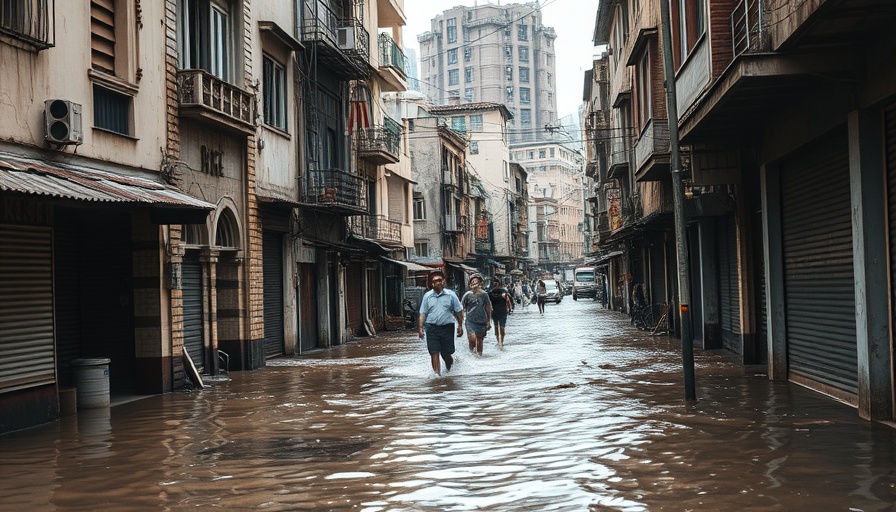
Climate Change: A Catalyst for Health Crises
As the Philippines grapples with the escalating impacts of climate change, health experts are sounding alarms that should not be ignored. Recent discussions at the Unlocking Capital for Sustainability Philippines forum highlighted a direct correlation between severe weather phenomena and disease outbreaks. Dr. Ramon San Pascual, from Healthcare Without Harm Southeast Asia, articulated a pressing concern—'the climate crisis is a health crisis.'
Understanding the Health Impacts of Flooding
Climate-linked flooding is driving up the rates of vector-borne and zoonotic diseases, particularly in urban areas. The Department of Health (DOH) has reported a disturbing rise in dengue and leptospirosis cases following severe flooding. In Quezon City alone, dengue cases surged to 6,981 between January and August this year, marking an alarming increase of 155% from the previous year. Vulnerable populations, particularly children under 10, are bearing the brunt of this crisis.
The Role of Urban Infrastructure
Experts contend that poor urban planning and infrastructure developments have worsened the situation. Dr. Alfredo Mahar Francisco Lagmay pointed out that years of infrastructure investments can be rendered ineffective if disasters like flooding are not anticipated. The recent flooding event, which inundated 36 out of Quezon City’s 142 villages, exemplifies a failure to implement suitable flood control measures. The emotional toll of witnessing one's home submerged in water, along with the associated health risks, remains a devastating experience for many families.
The Rising Tide of Infectious Diseases
The increasing frequency of severe weather events is not just a statistical concern; it has significant health ramifications. With the recurrent floods, diseases such as dengue fever, which is transmitted by mosquitoes, thrive in the stagnant water left behind. The DOH has responded by issuing advisories for residents, urging precautions against flood-related illnesses. This highlights the urgent need for improved health and infrastructure planning that can withstand climate-induced disasters.
Future Predictions: What Lies Ahead?
Looking forward, the trend of rising health crises due to climate change is likely to continue unless immediate action is taken. Experts indicate that the expected intensification of extreme weather events offers a stark warning to policymakers and healthcare professionals alike—they must prioritize sustainability practices not just in urban planning but in public health strategy. The integration of green technologies to construct resilient infrastructures that help mitigate flooding could be pivotal in this fight.
The Role of Community in Climate Resilience
Communities are increasingly recognizing the importance of sustainable living in response to these challenges. Community gardens, local recycling initiatives, and educational programs focusing on reducing waste are part of a collective movement towards eco-friendly lifestyles. By engaging in sustainable practices, individuals can help reduce their ecological footprint and foster resilience against the adverse effects of climate change.
Conclusion: A Call for Action
The findings on the direct connection between poor infrastructure planning, climate change, and the health crises it engenders serve as a wake-up call. It is a reminder that sustainable cities and green initiatives should not merely be aspirations—they must be urgent practicalities. As concerned citizens, it's our responsibility to advocate for responsible consumption and support local efforts promoting sustainability, ensuring a healthier, eco-conscious future.
 Add Row
Add Row  Add
Add 



Write A Comment